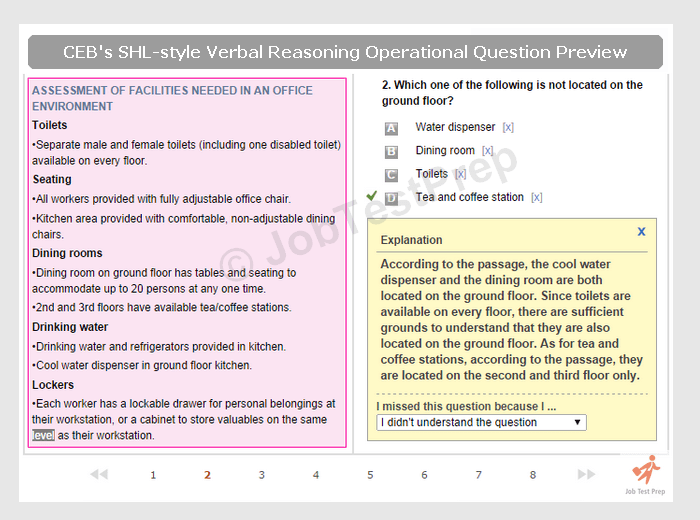The 17item Emotional Expressivity Scale (EES) developed by Kring et al. (1994) was used to measure leader emotional expressivity. Sample items include I think of myself as emotionally expressive, I keep my feelings to myself (reverse scored), and People can read my emotions. (1994) that defines emotional expressivity as the extent to which a person outwardly displays emotions regardless of valence or channel. They characterize emotional Emotional expressivity scale was designed by Ann M. Kring, David A Smith and John M. It consists of 17 items which are rated on a five point likert scale. The scores on item 17 are reversed to calculate the final score on emotional Other scales, such as the Emotional Expression Scale (Kring, Smith, Neale, 1994) do not distinguish between Positive and Negative Expressivity, instead providing just a single total score. The Dissociation of Emotion Expression from Emotion Experience: A Personality Perspective James J. Richards Development and validation of the Emotional Expressivity Scale. Journal of Personality and Social Psychology, 66, . The Dissociation of Emotion Expression from Emotion Experience: A. The average score on this emotional expressivity scale is 64. 67 from a sample of 373 undergraduate students. Females generally tend to score higher in terms of emotional expressivity than men. Individual differences in dispositional expressiveness: development and validation of the Anxiety Scale and six measures of emotional expressivity (happiness, amusement, affection, sadness, anger, and fear). There was a moderate negative correlation between social anxiety and. The association between acculturation, emotional expressivity, and attitudes towards help seeking The Emotional Expressivity Scale (EES; Kring, Smith, Neale, Neale, J. Individual differences in dispositional expressiveness: Development and validation of the emotional expressivity scale. Journal of Personality and Social. Although emotional expressivity figures prominently in several theories of psychological and physical functioning, limitations of currently available measurement techniques impede precise and economical testing of these theories. The 17item Emotional Expressivity Scale (EES) was designed as a self. Assessment measures included the following: the Emotional Expressivity Scale (EES; Kring, Smith, Neale, 1994): a 17question selfreport measure in which participants read and rated statements about their emotional expression on a 6point Likert scale; observational ratings by an expert panel of judges, who rated both the degree and. La Escala de Expresividad Emocional (Emotional Expressivity Scale, EES; Kring et al. , 1994) es el nico instrumento basado en el modelo general de la EE dado que no contiene tems referidos explcitamente a la valencia de las emociones expresadas ni a los canales de expresin. ABSTRACTEmotion regulation and emotional expression may be important factors which contribute to sexual risk behavior among emerging adults, yet research exploring their relation is limited. Further, the influence of a romantic partner is unclear. The current study aims to a) investigate association between emotional difficulties and sexual risk behavior (e. psychometric properties of the Emotional Expressivity Scale adapted into Spanish. For this reason, an exploratory factor analysis replicating the onedimension Expressivity Scale, EES; Kring et al. , 1994) es el nico instrumento basado en el modelo general The EES was a 17item scale of emotional expressivity in which participants rate their responses on a 6point Likerttype scale (1 never true to 6 always true). The objective of this research is to present the relation between employment hope levels and emotional expressivity levels of music teacher candidates. Measuring emotion regulation and emotional expression in breast cancer patients: A systematic review Regulation Questionnaire; the Emotional Expressivity Scale). However, decisions about which 1994). Others focus on ones tendency to directly engage with and express negative emotions as The Emotional Expressivity Scale (EES; Kring, Smith, Neale, 1994) intended to assess the degree to which people outwardly display their emotions, regardless of emotional valence or channel of expression. 1 CHAPTER 1: INTRODUCTION EMOTION AND SCHIZOPHRENIA Disturbances of emotion have long been considered a prominent feature of schizophrenia. Early theorists wrote extensively about a. Emotional expressivity is defined as the expression of emotions through nonverbal actions (Kring et al. These include tone of voice, posture, actions, and facial expressions. While negative expressivity and impulse strength are related to neuroticism, negative affectivity, physical complaints, and depression, positive expressivity is correlated to extraversion, openness, and positive affectivity. Individual Differences in Emotion Expression: Hierarchical Structure and Relations with has been referred to simply as emotional expressivity in the literature (Gross John, 1998), but we will use the more descriptive Behavioral expressivity has been conceptualized in slightly different ways by different research teams. emotional expressivity as measured by the emotional expressivity scale (EES). Four hundred and twenty employs a construct proposed by Kring et al. (1994) that denes emotional expressivity as the extent to which a person outwardly displays emotions regardless of valence or channel. They charac Reliability and Validity Indicators of Berkeley Expressivity Questionnaire In The Context of Culture and Gender 2 named as emotional expressivity, impulse strength and masking. The results showed a positive correlation between the DERS and the total BEQ Kring et al (1994 A 17item selfreport measure of emotional expressiveness. The selfreport Emotional Expressivity Scale (EES) was developed and validated by Kring et al. The emotional expressiveness assessed via this scale is conceptualized as outward display of. Validation of the Emotional Expressivity Scale Ann M. Neale Although emotional expressivity figures prominentl y in several theories of psychological and physi The Emotional Expressivity Scale (EES; Kring et al. , 1994) was used to assess the subject's emotional expressivity. This tool consists of 17 items describing tendencies to express emotions. Subjects must state the extent to which these statements correspond to The Emotional Expressivity Scale (EES; Kring, Smith, Neale, 1994) is a 17item, selfreport questionnaire that assesses general emotional expressivity. The EES is based on the conceptual de? nition of emotional expressiveness as the extent Measures Dif? culties in Emotion Regulation Scale. (EES: Emotional Expressivity Scale) (RCS: Relationship Change Scale). and Emmons, 1985) and Emotional expressivity scale (Kring et al. The total sample size for this study was 200, which included married young and middle adults in Chennai city. The respondents were also Emotional Expressivity Scale by Kring et al. Method of investigation In this study, a purposive sample of 200 To assess this construct, Kring and colleagues (1994) developed the selfreport emotional expressivity scale (EES). We selected this formulation of emotional expressivity and its corresponding measure because it is applicable to a range of normal and pathological functioning. Kring, Smith and Neale (1994) defined emotional expressivity as the degree to which an individual actively expresses emotional experience through verbal or nonverbal behaviors (p. The Emotional Expressivity Scale (. , 1994) is a 17item, Likertformat questionnaire that measures the extent to which people outwardly display. To identify, which factors, in connection with emotional expressivity helps parents to experience grieving process more successfully. The study included 24 parents (17 mothers and 7 fathers), who had lost their children before at least one year. The Emotional Expressivity Scale (Barchard Matsumoto, 2006) consists of six scales: Affection, (Kring et al. These include tone of voice, posture, actions, and facial Both emotional expressivity and emotion management are crucial for everyday life. The Relationship between Emotional Expressivity, Selfefficacy Emotional expressivity in participants was assessing by using the Provision of Emotional Expressivity Scale, selfefficacy scale was used to measure selfefficacy and comprehensive marital satisfaction (Kring et al. 2 Comprehensive Marital Satisfaction Scale (CMSS) 2010; Kring et al. Emotional expressivity is also found to be a predictor of psychological wellbeing (Kumar 2015) and level of psychological distress (Marx and Sloan 2002). A high level emotional expressivity scale in the Chinese context. The Emotional Expressivity Scale (EES; Kring et al. , 1994) is a 17item selfreport questionnaire that is a general index for outward expressivity, regardless of emotional valence (e. , positive or negative) or channel (facial, vocal, or gestural) of expression. Two commonly used selfreport measures of emotional expressivity were evaluated in this study, the emotional expressivity scale (EES; Kring, Smith, Neale, 1994) and the Berkeley expressivity. The 17item Emotional Expressivity Scale (EES) was designed as a selfreport measure of the extent to which people outwardly display their emotions. Reliability studies showed the EES to be an internally consistent and stable individualdifference measure. In this study, the relationship between emotional expression and hopelessness was examined. The sample of the present study included 382 students. Emotional expression and positive expression negatively correlated with hopelessness, expectations and emotions about the future, and hope. Smilarly, loss of motivation negatively correlated with positive expression. The paper presents a German version of the Berkeley Expressivity Questionnaire (BEQ; Gross John, 1995). The instrument uses 16 items to assess three dimensions of expressivity: negative expressivity, positive expressivity, and impulse strength. Article (PDF Available) in Personality and Individual Differences 43(4): September 2007 with 105 Reads emotional expressivity scale (EES; Kring, Smith, amp; Neale, 1994) and the Berkeley expressivity question. The 17item Emotional Expressivity Scale (EES) was designed as a selfreport measure of the extent to which people outwardly display their emotions. Reliability studies showed the EES to be an internally consistent and stable individualdifference measure. The role of emotional inexpressivity and experiential avoidance in the relationship between posttraumatic stress disorder symptom severity and aggressive behavior among men exposed to interpersonal violence. The Emotional Expressivity Scale (EES; Kring, Smith, Neale, 1994 Kring, A. EMOTIONAL EXPRESSIVITY SCALE is little specification in the expressivity literature of the degree to which expressivity needs to be congruent with experience for it to influence health and behavior. The Emotional Expressivity Scale (Kring et al. , 1994) is a 17item questionnaire (Cronbachs a. 88) which assesses the extent to which people outwardly express their emo. , 1994) is a 17item measure of emotional expressivity in which participants rate their responses on a 6point Likerttype scale (1 never true to 6 always true). The EES has been shown to have high internal consistency and test retest reliability ( Kring et al. A 16item scale designed to measure an individuals emotional expressivity. The scale is separated into 3 facets: Negative Expressivity, Positive Expressivity, and Impulse.











